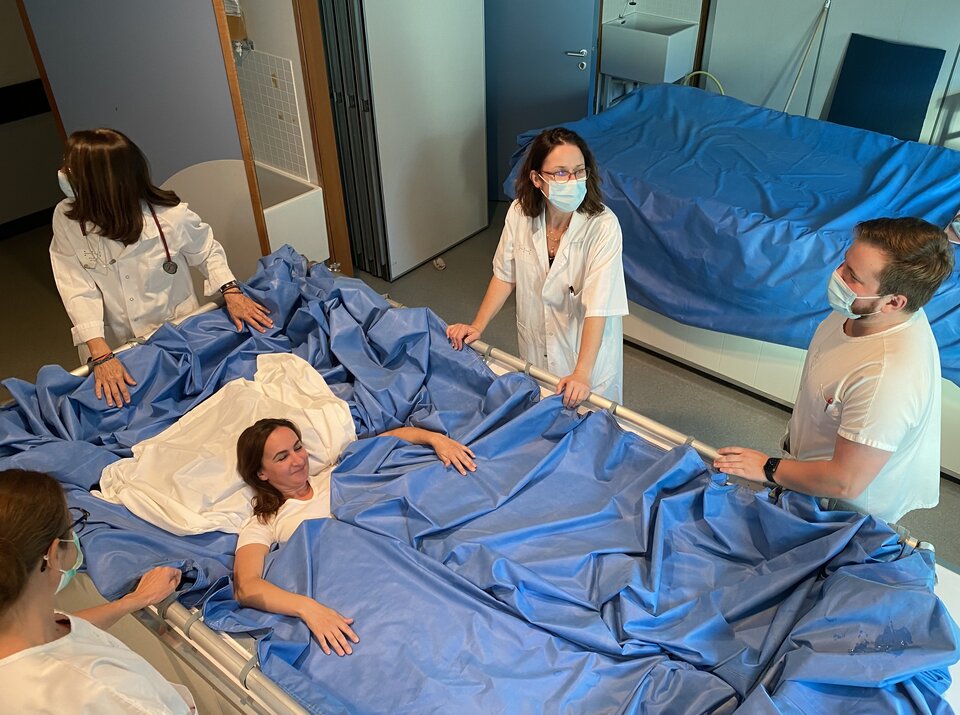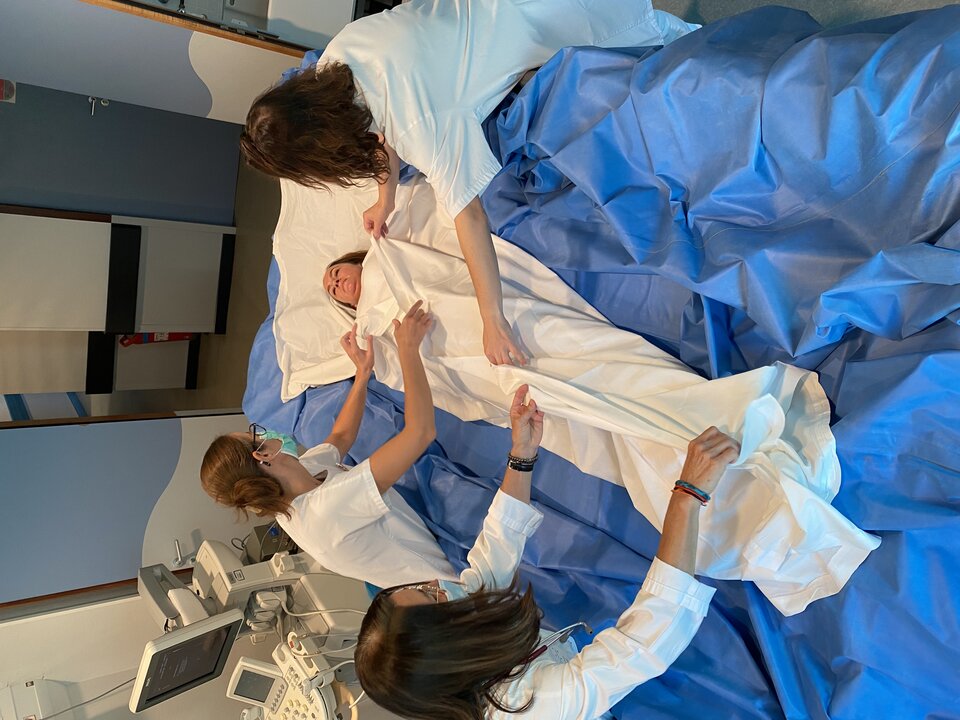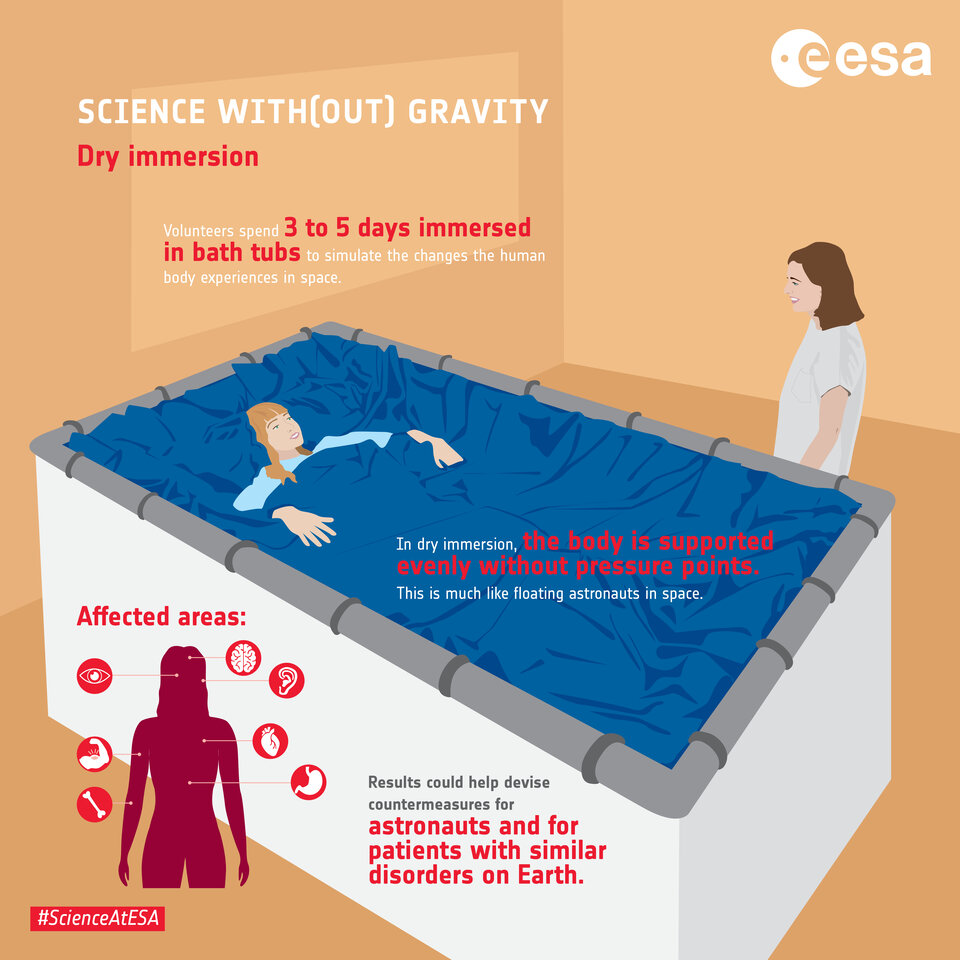25.09.2021

This week 20 women are tucking themselves in a waterbed for five days as part of a dry immersion study to recreate some of the effects of spaceflight on the body. The campaign kicked off yesterday with the first two subjects at the Medes space clinic in Toulouse, France.
Volunteers lay down in containers similar to bathtubs covered with a waterproof fabric to keep them dry and evenly suspended in water. As a result, the body experiences ‘supportlessness’ – something close to what astronauts feel while floating on the International Space Station.

This is the only the second time a dry immersion campaign takes place with all-female participants, and it is a first for Europe. ESA decided to launch the study, called Vivaldi, to address the gender gap in science data.
“There is almost no knowledge about the physiological and psychological effects on women in this research area. An all-female dry immersion study will add to previous male campaigns ran in Europe and Russia,” says Angelique Van Ombergen, ESA’s discipline lead for life sciences.
Volunteers will have limited motion in a monotonous environment and experience changes in body fluids and mobility, as well as in the perception of their own bodies. Results could have great potential to investigate detrimental effects of spaceflight and movement disorders for immobilsed and elderly patients on Earth.
A day in a waterbed
Immersion begins when water covers the subject above the thorax, immobilised with legs and trunk covered with a cotton sheet. Only the arms and head remain free outside the tarp.

Volunteers spend almost 24 hours a day in the immersion tank, limiting their movements as much as possible. Each day starts at 7 am with urine and blood samples, and it is filled with scientific protocols and measurements to study how the body adapts.
All activities from leisure to hygiene are done within the constraints of immersion. Only a small pillow is allowed during meals to ease eating. Showering and transfer to other experiments are done outside of the tank while lying on their backs and with their head tilted 6 degrees down to minimise fluid shifts.
Why dry immersion?

In weightlessness, astronauts’ bodies lose muscle and bone density, vision changes and fluids shift to the brain. Finding ways to stay healthy in orbit is a large part of human spaceflight research.
The results from this type of research do not only benefit astronauts but have implications for patients on Earth with similar disorders and elderly people.
Quelle: ESA
